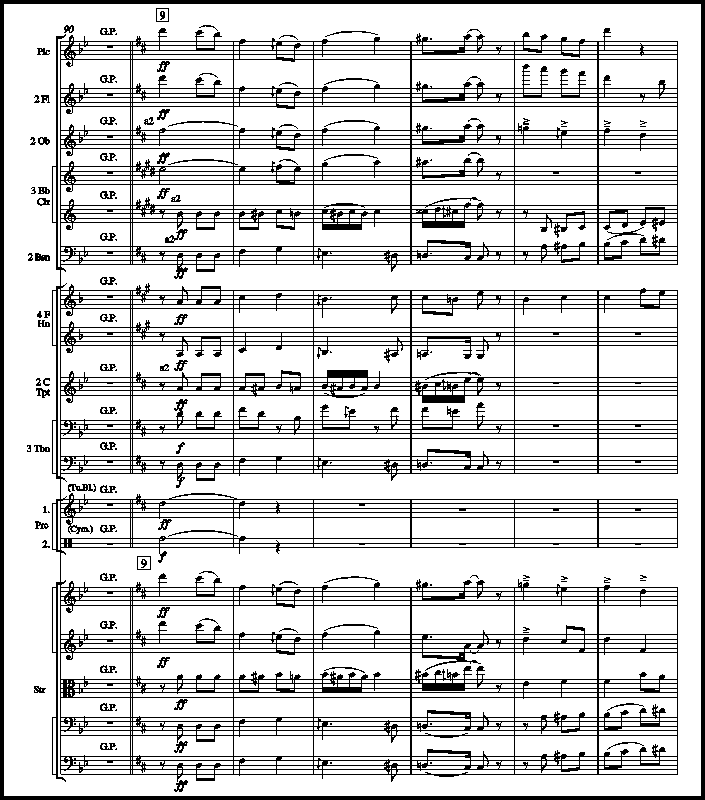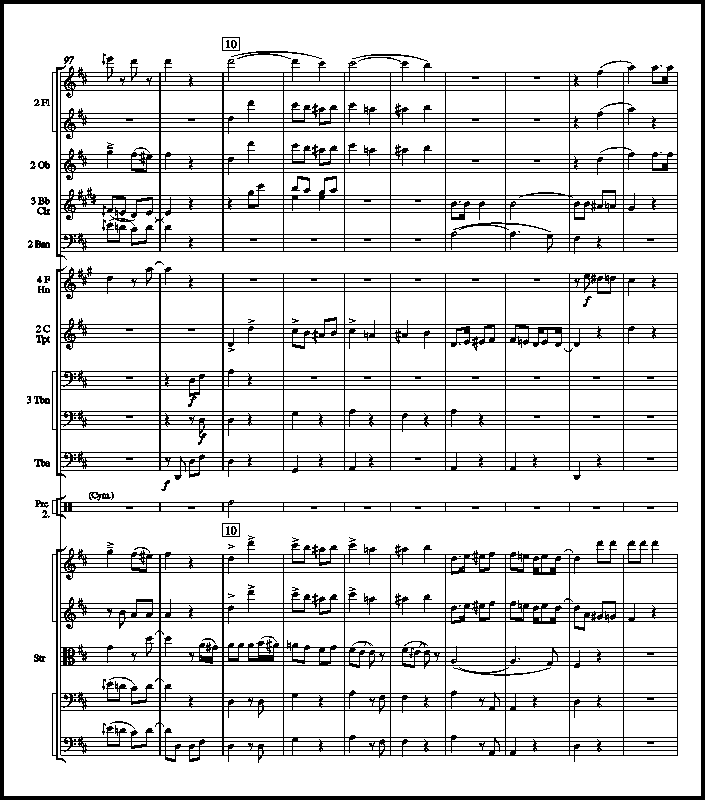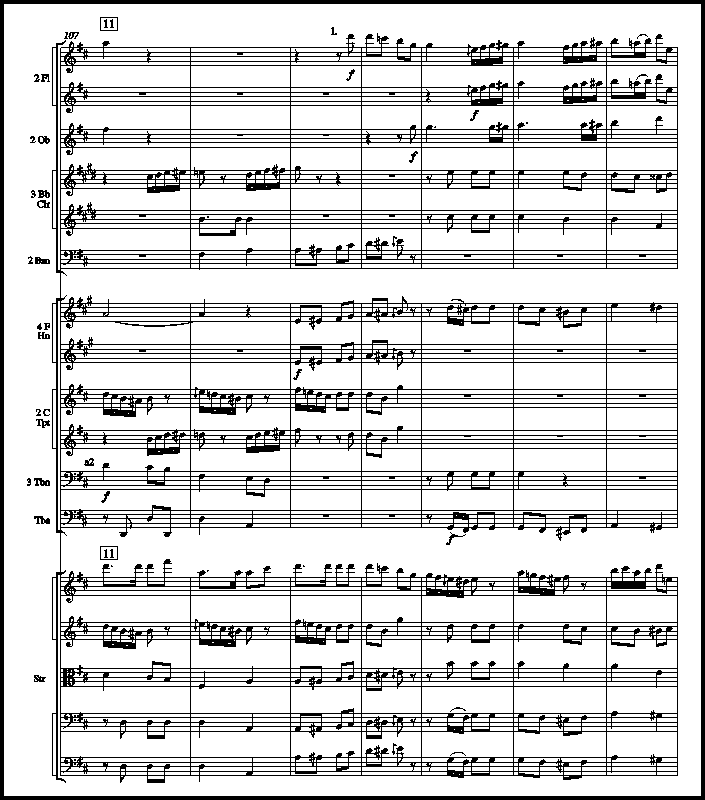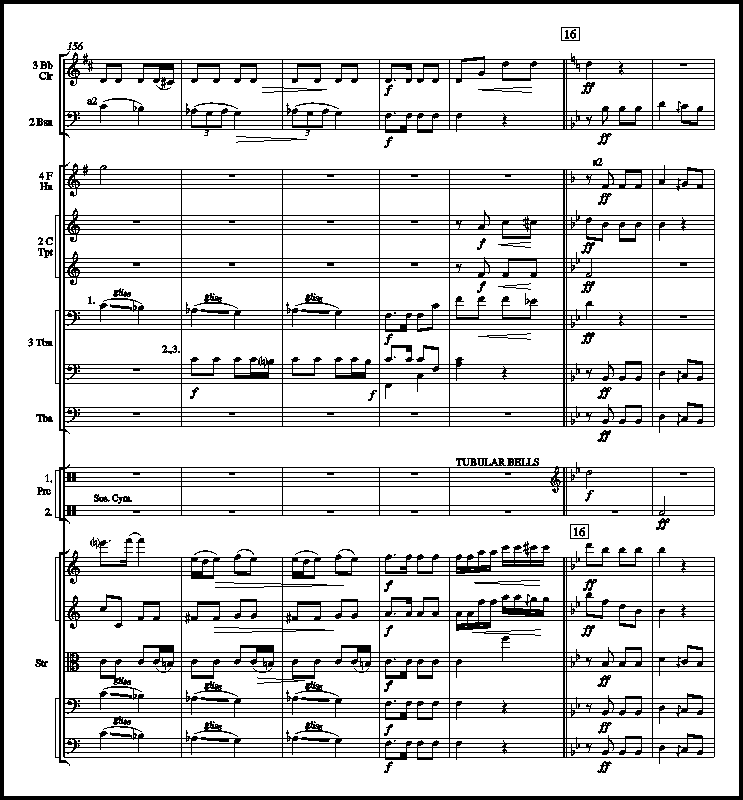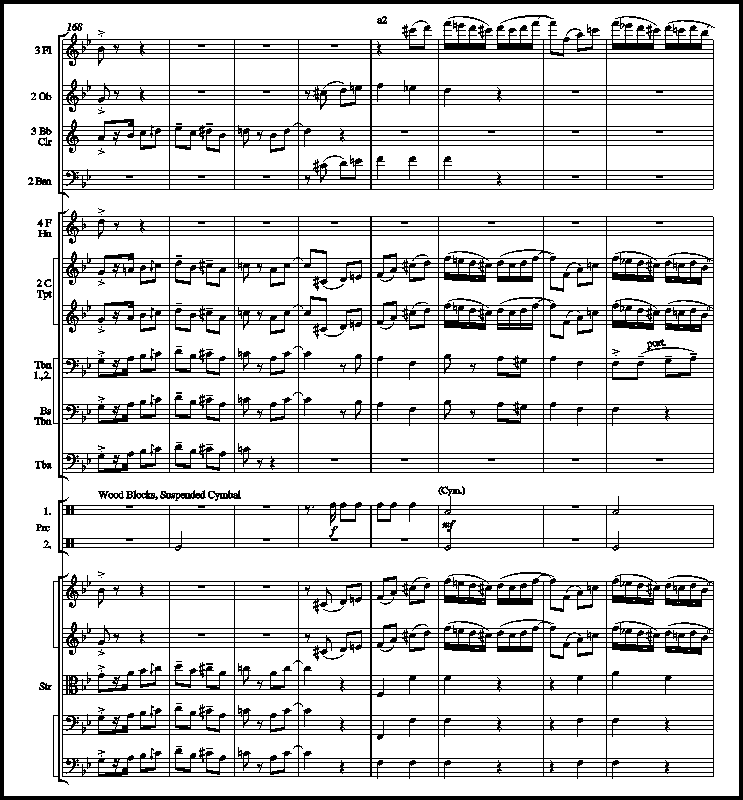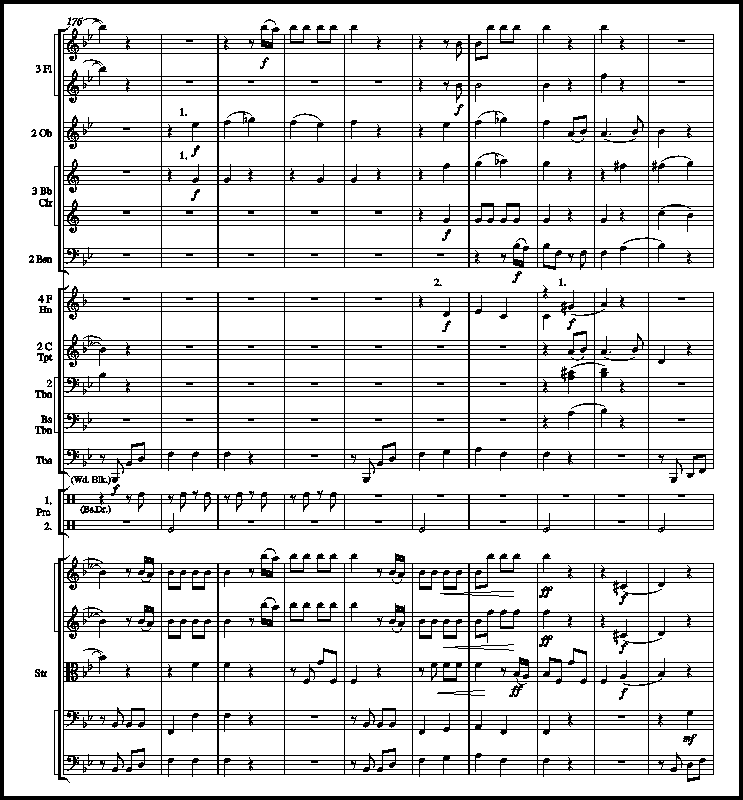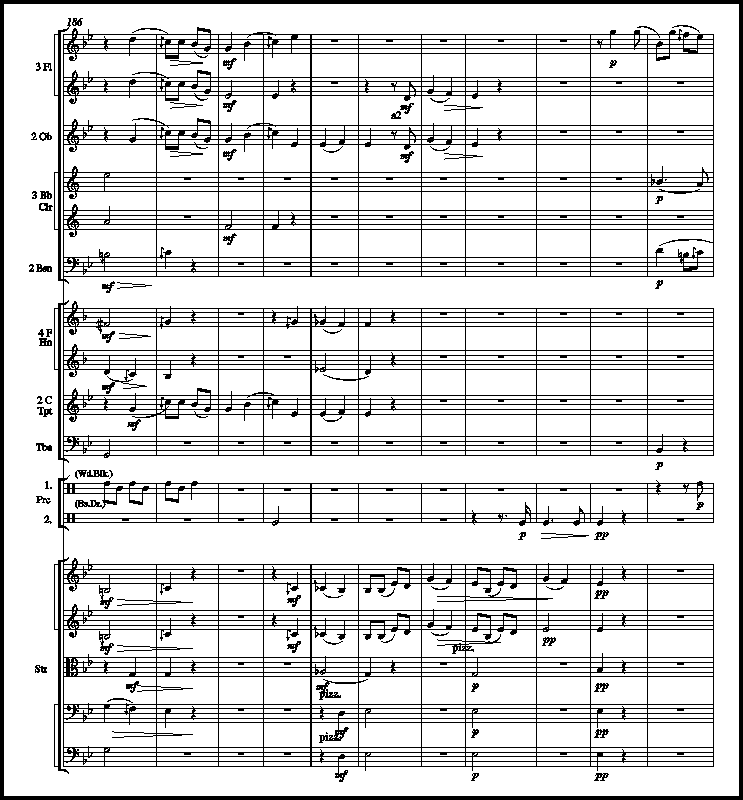Declaration of Independence
The story of the American Revolutionary War in music, from the first salute to the new nation to the victory at Yorktown.
The form of the composition is a modified sonata; this is the first statement of the main theme.
Copper’s style is thoughtful, meticulous, and dedicated. He is not only invested in creating beautiful music but also in the intricate processes involved, such as creating attractive melodies and rhythms and ensuring all components are placed correctly at the right time. The trumpet line from the opening is an example, played below by Francisco Grillo.
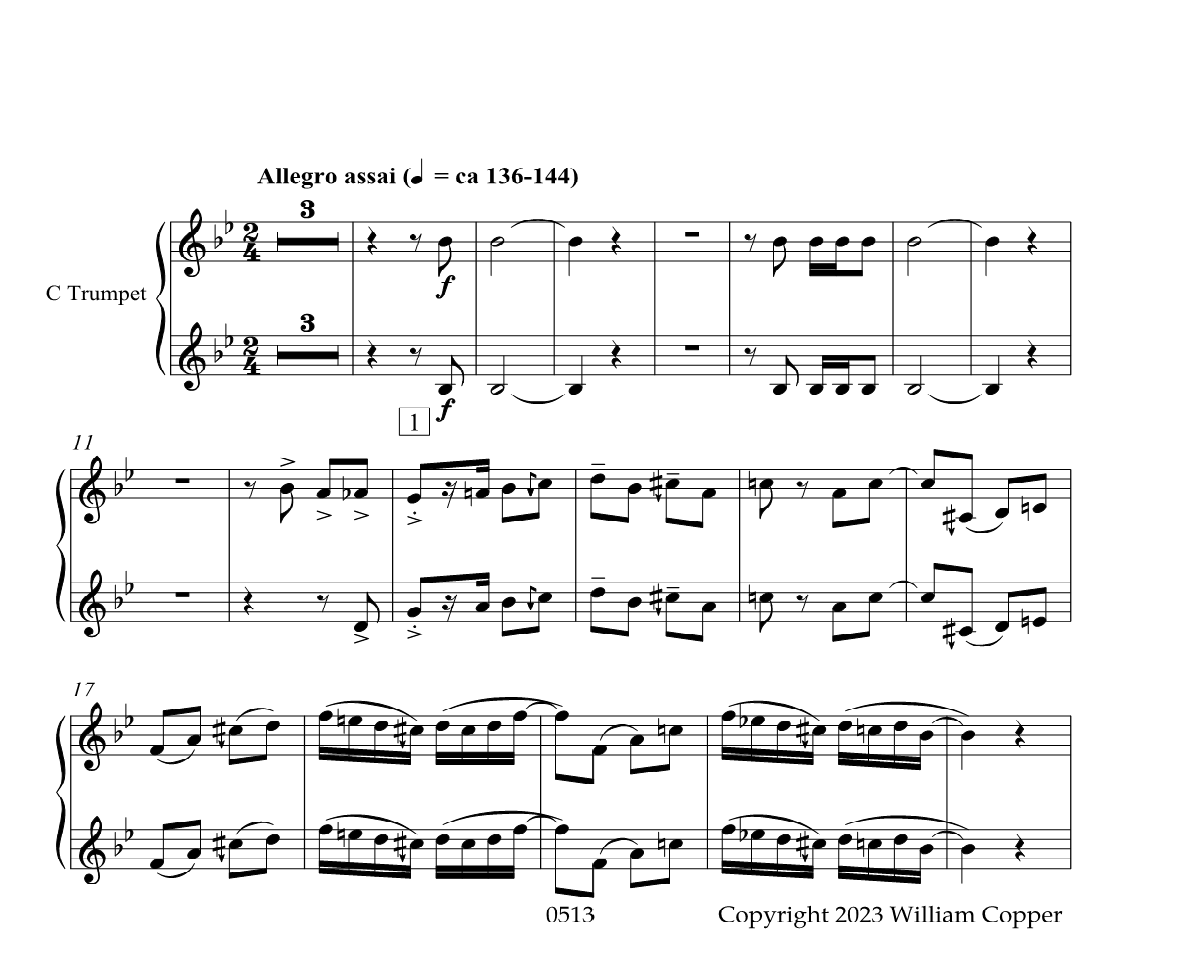
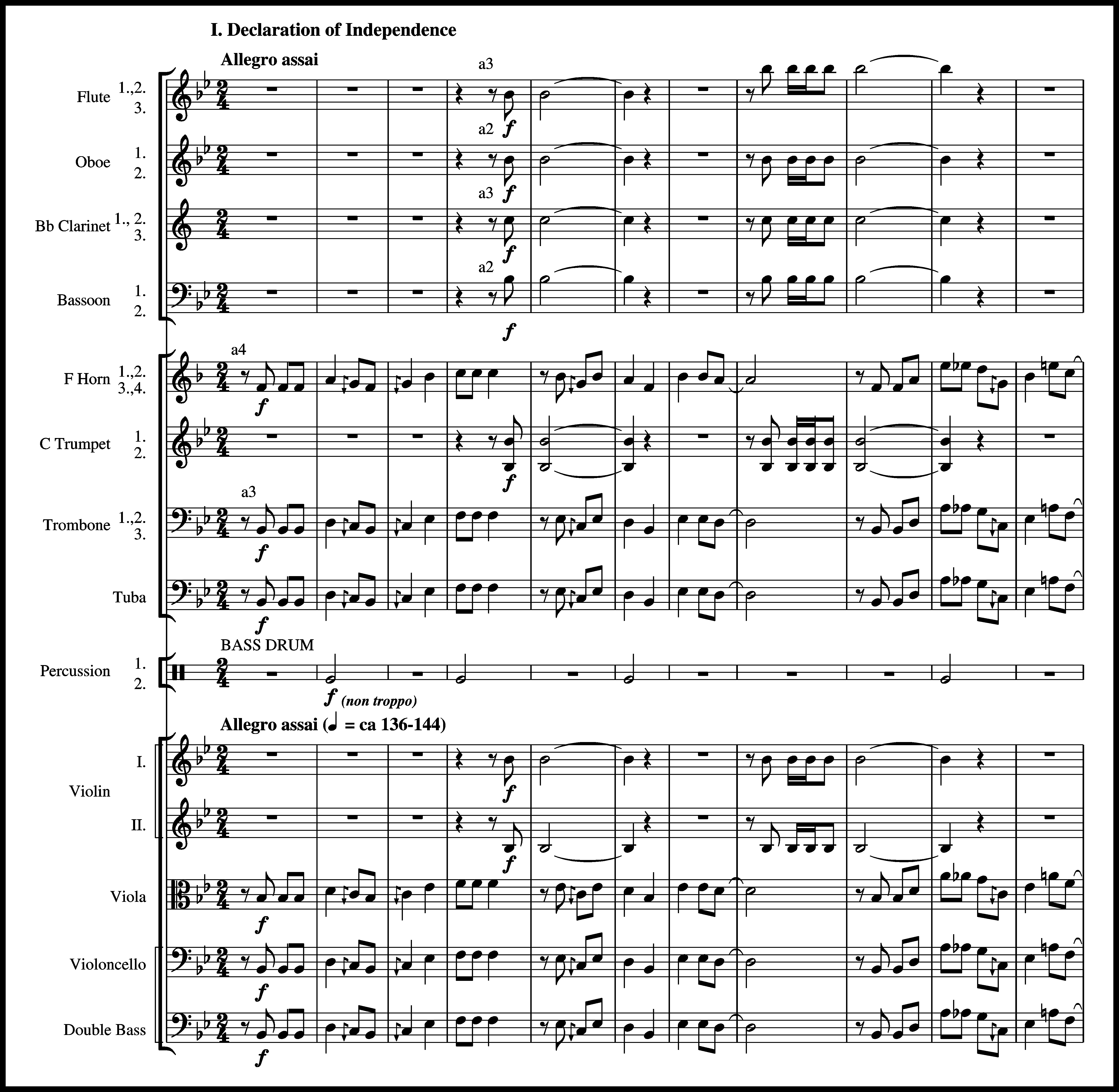
First Salute to the new nation at St. Eustatius in the Caribbean
Establishing the use of variations as part of the sonata modification, this is the first theme in a variant that conveys the first salute to the new nation from the small but important island in the Caribbean, St. Eustatius.
The British fleet and army arrive in force at Long Island
After the skirmishes and disorders in the Boston area, which happened before the Declaration of Independence, the British arrive with an overwhelming fleet and large army. They anchor in the waters of New York City. In the sonata form, this material creates a second theme area.
Defeat and Retreat by George Washington and the continental army.
The army is defeated and must retreat first from Brooklyn to Manhattan and then up and away north. In the form, this is a variant of the first theme, beginning a modified repeat of the exposition.
Winter at Valley Forge
From the Development, the Winter at Valley Forge: work, discipline, drill – and mishaps.
Please subscribe for very occasional email updates about the Declaration of Independence and the Fifth Symphony. Not more often than a few times in a year. You will receive an automatic request to confirm your subscription, please confirm so that the software is happy. This list is called “Declaration”. You may subscribe to “Newsletter” for more general news.

